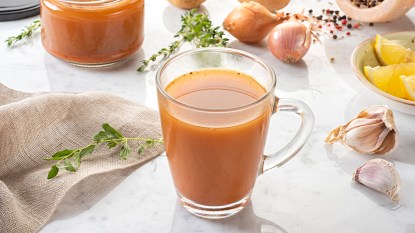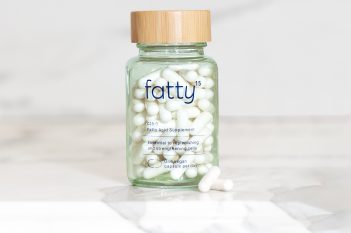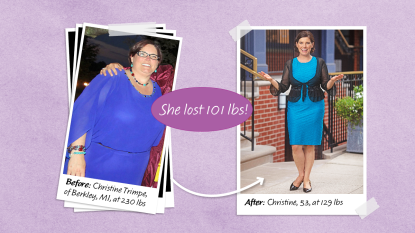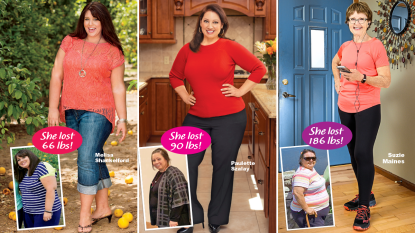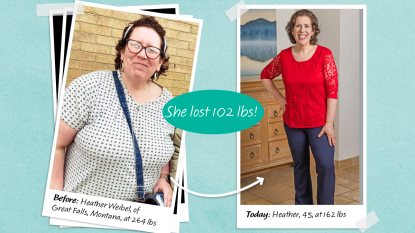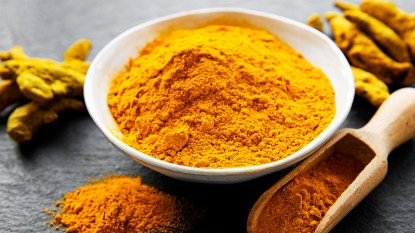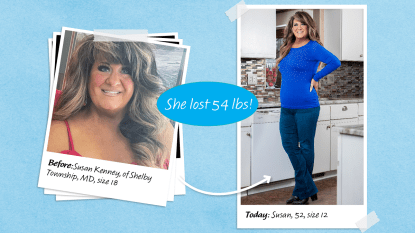The Top 10 Diets of 2023: How They’re Helping Women Lose 100+ Pounds & How They Can Work for You!
From tried-and-true plans to the smartphone app that's making weight loss easy

We all want to lose a few pounds — and there is no shortage of ways to go about trying to slim down. But what approach is best for you and your unique body? To help you figure that out, we’ve rounded up the top diets of 2023. These are the plans that earned the most online searches, garnered the biggest followings and created the loudest buzz in 2023, according to a study conducted by Ketolog.com and other surveys. In this list you’re sure to find a plan that fits your lifestyle and eating preferences. Keep reading to learn about these popular plans and how they are helping women lose serious weight — and how they can help you do the same!
The top 10 diets of 2023
#10: Blood-sugar balancing diet
Diabetes now affects one out of five people in the US. With that increase, there’s also a growing interest in blood-sugar balancing strategies. “Type 2 diabetes is a serious condition that is growing in prevalence,” says registered dietitian Wendy Bazilian, DrPH, author of Eat Clean, Stay Lean. “It puts women at greater risk for cardiovascular disease, but there is so much we can do to reduce our risk.”
So it’s no surprise that the international best-selling book Glucose Revolution by French biochemist Jessie Inchauspé captured people’s attention while teaching them how to reduce the blood sugar spikes that cause cravings, weight gain and diabetes. Her second book, The Glucose Goddess Method, boils the advice down to just four easy life hacks that are helping women get great results. The hacks are as simple as:
- Eat a savory — not sweet — breakfast
- Drink a shot of apple cider vinegar daily
- Enjoy a fiber-rich veggie appetizer before dinner
- Walk after your largest meal of the day
Beth Deen lost 38 pounds by following the advice of The Glucose Goddess online. “I’m so pleased I’ve been able to accomplish my glucose goals without medication. This information has been invaluable,” she says.
Click to read more about how to use the Glucose Goddess hacks for weight loss.
#9: Alkaline diet
An alkaline diet is a naturally anti-inflammatory diet. It features foods that have a calming or alkalinizing effect inside the body, rather than an acid-producing effect. The theory is that you can’t lose weight or get healthy when your body is in crisis from acid-producing foods like refined sugar. This way of living alters the body’s pH, essentially putting it into protection mode where it clings to body fat. But when you eliminate all that acid, the body can absorb nutrients to heal itself and release trapped toxins and weight.
This pH shift can happen in as little as one week. Diet expert Ross Bridgeford, author of The Alkaline Reset Cleanse, says, “You’ll undo years of poor diet, stress, and cumulative toxic buildup, and you’re helping your body rebalance digestion, hormones, liver, kidneys, immune system and more.”
Click to learn how to lose weight on a 7-day alkaline detox diet.
#8: Carnivore diet
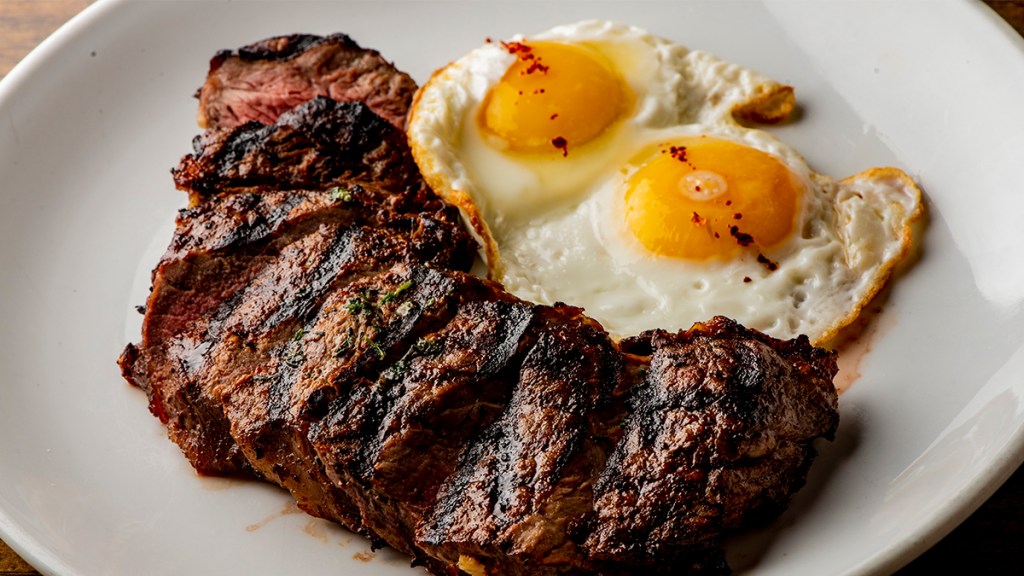
This zero-carb approach takes paleo and keto plans and kicks them up a notch. On a carnivore diet, you exclusively eat animal products: mainly fatty cuts of meat. One popular carnivore approach is called the BBBE diet, which stands for the “beef, bacon, butter and eggs” diet, created by Ken Berry, MD. While this approach isn’t for everyone, it is known to melt off weight quickly. Kelly Hogan lost 80 pounds in her first year on a carnivore diet and has been successfully living this lifestyle now for 14 years. For her, healing took a radical change to her food choices. “My IBS symptoms reduced in just 2 weeks,” she tells First. “I hate the idea that we take people who are sick and keep shoving the food pyramid that is bread-heavy at them.” Click through for astonishing before and afters of women who lost up to 131 lbs on the carnivore diet.
#7: Noom
This weight-loss app is gaining popularity and delivering results for women like Emily Piaseczny, who dropped from a pant size of 22 to 10. Noom takes a mind-body approach to weight loss, utilizing cognitive-behavioral therapy, mindfulness and stress management practices to deliver personalized nutrition coaching.
When it comes to eating, Noom users categorize food by the 3-color traffic light system. You can freely eat “green” coded foods, which are low-calorie and nutrient dense. You can proceed with caution on “yellow” foods, which are moderate-calorie and should be eaten in moderation. And you may want to stop when faced with “red” foods, which are higher-calorie and need to be limited.
Click to learn more about how Noom works for weight loss.
#6: Paleo diet
Also known as the caveman diet, Paleo plans are all about eating foods that would have been available to our hunter/gatherer ancient ancestors. Back during the Paleolithic time in history, people ate what was available, mainly meat and berries. This diet approach stresses whole foods, not processed, refined food products that rely on modern agriculture. On the Paleo diet you can eat lean meat, seafood, fruit, veggies, nuts, seeds and natural oils like olive oil. Avoid dairy products and processed grains.
This get-back-to-our-roots lifestyle encourages us to eat the way the human body was originally designed to eat. “Human genes were shaped in the Paleolithic era, and we’re still genetically programmed to respond best to the types of food that allowed ancient humans to survive and thrive,” says Colorado State University researcher Loren Cordain, PhD, author of The Paleo Diet.
Click to learn more about how to lose weight on the paleo diet. and how paleo helped Sandi Holder lose 98 pounds
#5: Plant-based diets
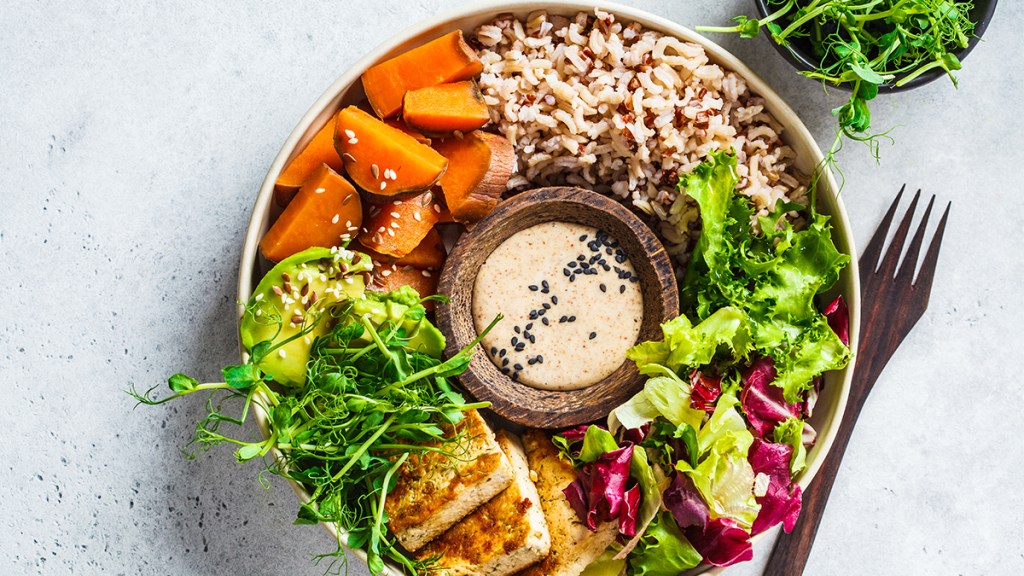
There are plenty of different plant-based diet variations with names like vegan, plant-forward or eating on a “plant slant.” But at their core, they all favor eating foods from plants rather than animal products. Some plant-based diets are super strict, requiring 100% plant commitment. Other plans just encourage eating more plants than your norm, even increasing your intake by two extra plant servings per day.
Plant-based diet approaches are super healthy, especially for your heart. And advocates remind that there are plenty of plant-based proteins — like tofu, peas, pistachios and protein powders — that can make up for not eating animal protein. Gut-health researcher Megan Rossi, PhD, author of Eat More, Live Well, explains, “The evidence suggests we could all benefit from eating more plants, but that doesn’t necessarily have to mean only plants.”
Click to learn about the 30-day plant-based diet plan that helped Penny Wade lose 178 lbs.
#4: Whole30
On the classic Whole30 plan, a 30-day elimination experiment, followers give up foods that are known to trigger sensitivities and cravings for one month. Food such as grains (bread, pasta, rice), dairy, added sugar (real or artificial), legumes like lentils and peas, and alcohol are off the menu for 30 days. Instead, dieters replace them with meat, seafood, eggs, veggies, fruit and healthy fats like coconut oil and ghee (also known as clarified butter).
After the 30 days, users then slowly re-introduce eliminated foods one at a time and tune into their symptoms. This process allows people to discover which foods truly trigger cravings and symptoms such as digestive changes, headaches, joint pain, mood changes and fatigue. Whole30’s co-founder Melissa Urban describes this new-found knowledge as “food freedom.” She explains, “You are in control of your food, instead of food controlling you.” By eating real food meals, Urban tells First magazine, “My energy stays high all day long — no 2 p.m. slump. I don’t even need sugar or caffeine. I haven’t had caffeine in a decade!” (Read how Peggy Jindra lost 120lbs and reversed high blood pressure on Whole30.)
To learn more, click through to our sister site for details on the original Whole 30 diet plan. (Whole30 also has a plant-based version.) Related news: Whole30 now allows potatoes on the plan.
#3: The Mediterranean diet
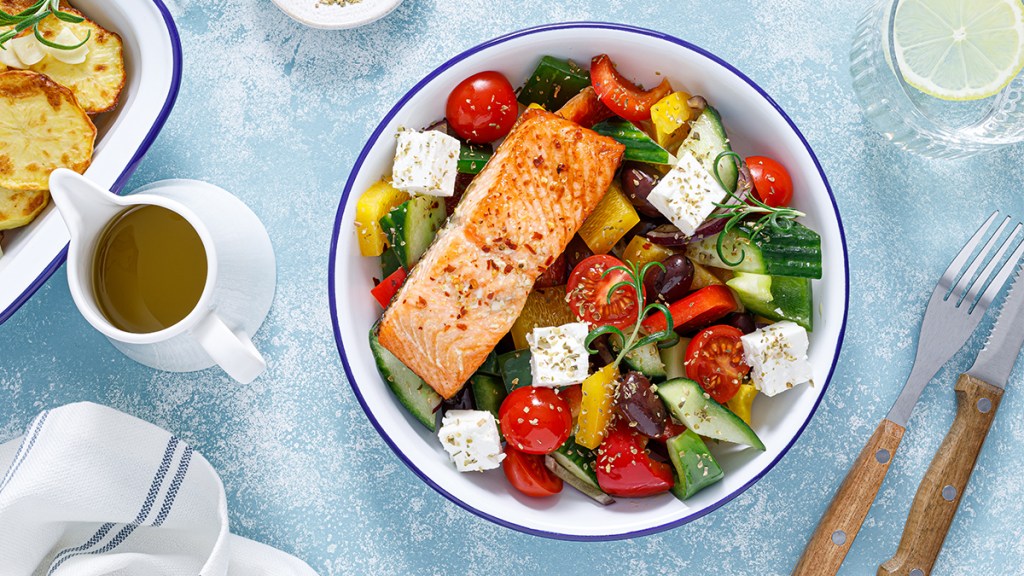
The Mediterranean diet is named for the healthy foods common in this region of the world, including Greece, Italy, France and Spain. Meals consist mostly of fresh fruits and vegetables, cheeses low in dairy like feta, plus some whole grains, as well as seafood, seeds and nuts. The diet also includes low-to-moderate amounts of lean protein like chicken.
With this healthy, balanced way of eating, it’s no surprise that folks living in the Mediterranean are among some of the slimmest and longest-living folks on the planet. Experts believe their diet helps prevent disease and promote longevity. Dawn Harris Sherling, MD, author of Eat Everything, says, “The data support eating patterns like the Mediterranean Diet, which embrace whole foods and emphasize a wide variety of fruits and vegetables, as being truly anti-inflammatory and disease-preventing.”
Click to learn how following a Mediterranean diet helped Vicky Sheerin lose 204 lbs!
#2: The keto diet
The keto diet is a low-carb diet where followers eat primarily high-fat, moderate-protein meals. Fats such as butter, olive oil, coconut oil, nuts, seeds and avocados make up about 70% to 80% of daily calories. And animal proteins such as meat, fish, eggs and dairy foods comprise around 20% to 25% of total calories. Keto dieters avoid or reduce foods such as bread, rice, pasta and starchy fruits, vegetables and legumes. In fact, carbs make up only about 5% to 10% of their daily calories. With this approach, users aim to consume around 20 grams of carbs per day, although some low-carb diets are more flexible and forgiving.
By eating this way, the body doesn’t get an endless flood of carbs to burn as energy. It shifts to burning stored fat instead. In this state, known as ketosis, the body burns fat more efficiently, to almost guarantee weight loss.
Click to learn how a keto plan can help women over 50 lose weight and how Amy Eiges lost 224 lbs on keto
#1: Weight Watchers
Weight Watchers has been around for 60 years, and it remains one of the most well-known diet tools on the planet: More than 2 million people searched for the diet this year. The plan has evolved over the years, but it always prides itself in providing nutrition guidance and a support system for accountability.
Weight Watchers assigns a point system to foods to help dieters track their intake and stay within their target goal range for weight loss. Using the budget analogy, dieters can “spend” their food points however they want, enjoying flexibility in their day and week. Plus, dieters love having more than 200 foods that are designated as “zero point” foods. These items, such as nonstarchy fruit and veggies, eggs, even chicken and turkey breast, help ensure dieters feel satisfied, not deprived, while losing weight. Click through to see how Paula Briner lost 207 lbs on Weight Watchers.
One change that made WW new and exciting in 2023: The company began to offer not just nutrition counseling, but access to prescription injectable weight-loss drugs like Ozempic. Plan users could speak to medical professionals via a telehealth link to obtain these prescriptions. Click to learn more about how Ozempic works for women over 50.
Related: 6 Science-Backed Tips to Lose Weight Faster on Weight Watchers — Or Any Diet
This content is not a substitute for professional medical advice or diagnosis. Always consult your physician before pursuing any treatment plan.


